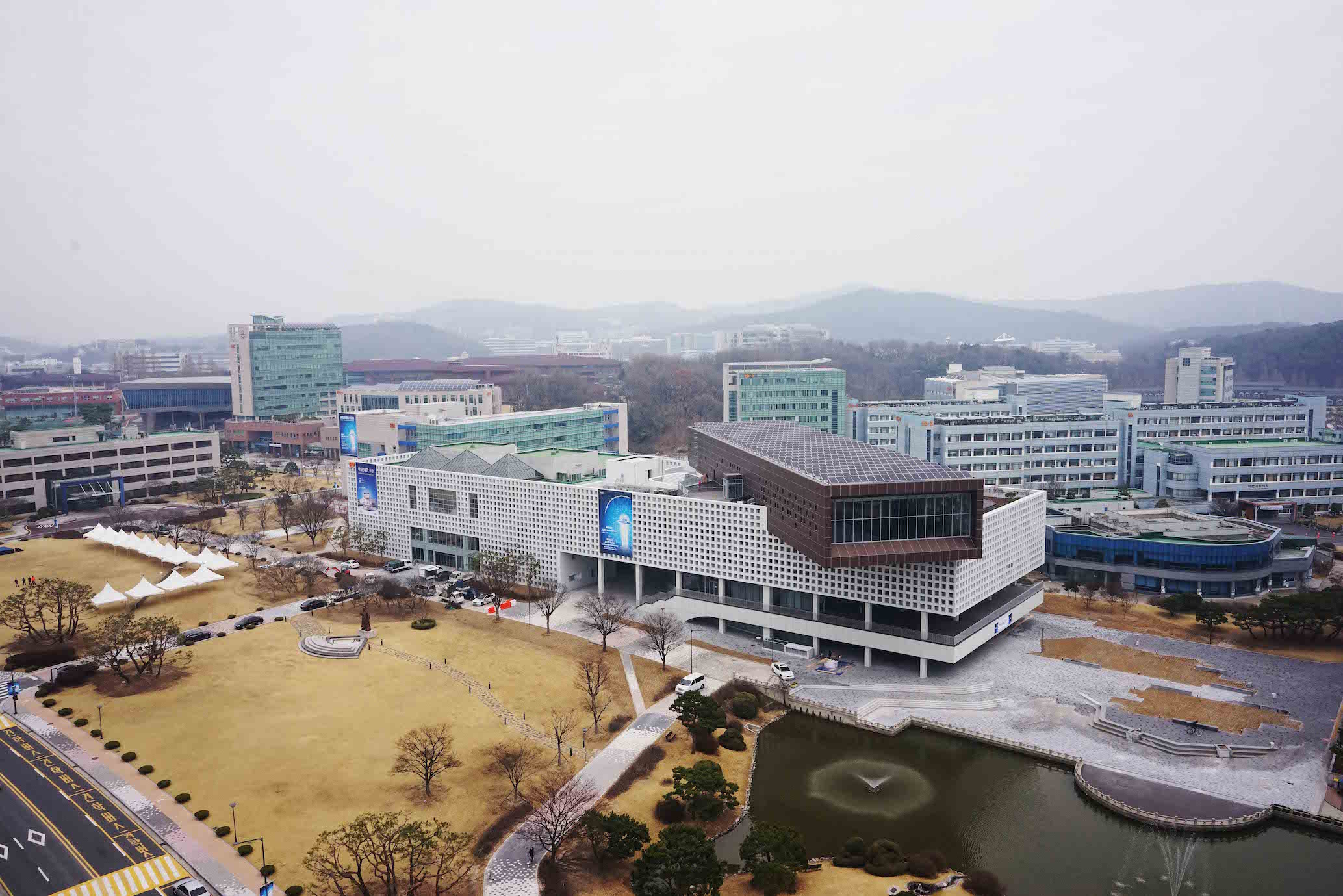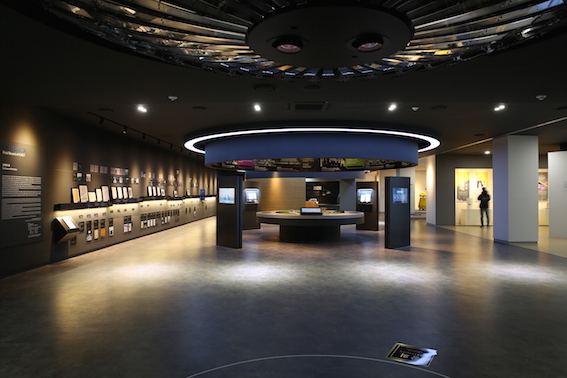
On March 19, the opening ceremony for the newly completed Academic Cultural Complex (E9) was held. With over 34.9 billion KRW invested in the renovation, the old library building has been reborn with a new exterior and interior, as well as an appended Cultural Building. Construction of the Cultural Building has been going on since October 2016, and the renovation of the library since March 2017. The most notable addition to the library interior is the KAIST Vision Hall on the first floor, which will serve as a space to share the history and future vision of KAIST. Since February 26, the Academic Cultural Complex had been in the pre-open state in which only the essential library services such as borrowing books were available. The opening ceremony marked the conclusion of all preparations for the new building and the official launch of the Academic Cultural Complex services.
The ceremony started with a ribbon cutting in front of the new Cultural Building, after which President Sung-Chul Shin gave a commemorative speech. Congratulatory speeches from KAIST founder Dr. Kun-Mo Chung and Former Minister of Information and Communication Seung-Taek Yang followed, and the KAIST Chorus gave a celebratory performance. All guests were then taken on a tour of the Academic Cultural Complex and the Vision Hall.
The old facilities of the original library building, which opened in March 1990, had brought about many inconveniences for KAIST members. The run-down plumbing and electricity system, old furniture and fixtures, and the inefficient use of space engendered many complaints among students. In 2015, the allocation of the school budget to the library renovation was finalized, and construction and rearrangements launched the following year.
Of the original 500,000 books kept in the library, 300,000 of the less-sought were moved to the Deposit Library located in Munji Campus. The transfer of books created ample room for new study spaces for students. These spaces have been furnished with brand-new carrels, or studying cubicles for library users. Each floor of the library is equipped with a different type of carrel to satisfy the different needs of various students. On the third floor is the reading room, filled only with study desks and arranged to maximize seating efficiency. There are several new sectors that have been added to the library apart from the study spaces. These include the K-Library, Travel Zone, Library Instruction Room, Faculty Lounge, Special Collection, and Media Materials.
Many students have expressed satisfaction towards the new facilities, especially praising the modern rearrangements of the free spaces. Senior Mechanical Engineering student Seunghoon Yang said, “Before the remodeling, many students were reluctant to study at the library because of the frequent conflicts over noise and seats, as well as the lack of power outlets. Thanks to the new wide and clean study spaces, I think I will be visiting the library more. It also seems like a wonderful place to sit back and relax with a book.”

The Vision Hall is a space created by the collaborative efforts of KAIST members. Faculty, staff, and students have all participated in collecting documents and mementos that represent KAIST. The purpose of the hall is to share the past, present, and future of KAIST with both school constituents and visitors. Covering an area of about 1,105 square meters, the Vision Hall consists of four main exhibition sectors: the History Zone, the Research Results Zone, the Vision Zone, and the Special Exhibition Gallery. The History Zone exhibits the history of KAIST’s development since its establishment and includes the section “Campus of Innovation”, which shows what life in KAIST is like. The Research Results Zone showcases the remarkable research feats of KAIST in its various research areas with graphics, models, and actual products. The Vision Zone introduces the values and future vision of KAIST and even offers honorary student cards for visitors. Special themed exhibits will be held in the Special Exhibition Gallery around twice a year. The media art exhibit “Unlimited Semiosis”, which features the works of famed Korean artists Nam June Paik and Lee Nam Lee, opened as part of the Academic Cultural Complex opening ceremony and became the first exhibit to be held in the Special Exhibit Hall. In between official exhibits, student organizations and clubs are also welcome to rent the hall for their own exhibits.

